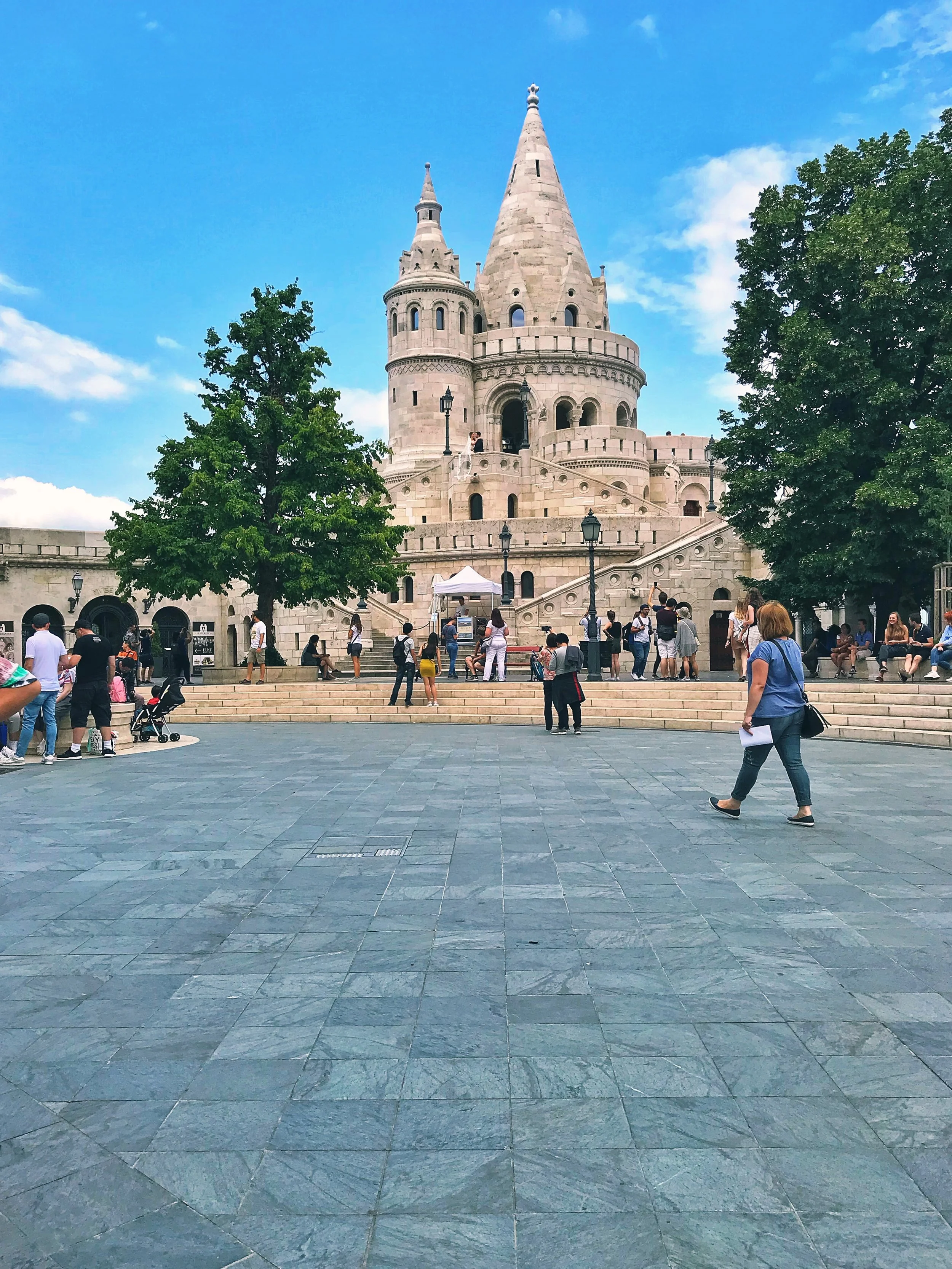The wall of the Danube - Fisherman's Bastion
Sitting at the curtain wall and watching the expansive spread of Budapest is truly an experience you want to take home. A cocktail of vintage construction built over the years on both sides of the riverbank gives this city its unique stamp in the world. These two halves of this one big beautiful town divided by the brilliant Danube flowing silently, Buda and Pest appear as two acts of a brilliantly written play.
The one building that evidently stands out is the Hungarian Parliament. Built on the bank of Danube, the Parliament's neo-gothic architecture draws all eyes towards itself from any rooftop in the city.
View of the Denube and Hungarian Parliament from the Fisherman’s Bastion.
Fisherman's Bastion is built on the Buda side and has been a part of the city's defensive systems since the 15th century. The remarkable Neo-Romanesque architecture of the Bastion gives a fairy tale touch to the place. The structure is built using white stone that gives it uniformity and at the same time makes it stand out in its neighbourhood. The Bastion is decorated with many conical domes, small geometric windows and spiralling staircases that you almost imagine Rapunzel looking out of one of the windows at any moment.
The infamous fairytale structured building at the Bastion that attracts crowd from far away.
But that's not it. Like many historical sites, the Bastion has its own legendary stories. Its wall that runs approximately 140 meters long is lined with seven high-pitched stone towers built in honour of the seven chieftains who laid the foundations of Hungary. The name Fisherman's Bastion comes from the guild of Fishermen who guarded the town where the Bastion currently stands. Another legend speaks of a secret passage hidden somewhere in the Castle. Some say it was used by the fishermen to get to the fish market in Buda, and the Viennese army tried to use it for invasion.
One of the many routes connected within the Fisherman’s Bastion.
The present look of the Bastion is designed by Frigyes Schulek, who also built the Matthias Church and is known for his Neo-Romanesque style. The Bastion had to face many such problems with its plans and budget. It is said that Frigyes' restoration plans were considered foolish once upon a time. But good things came along too. During the restoration, archaeologists located several tombstones and a chapel connected to the burial place.
Neo-Romanesque architecture on the door and its frames.
The location of Fisherman's Bastion worked favourably in the olden times. If you look at the Bastion from a distance, you can see it sits on a hill and right behind the wall is where Buda Castle is. In the earlier days, the high ground, also known as Castle Hill, served as a fortification. So, to guard the city, it was the perfect place to build it.
The remarkable fortification by Frigyes.
You will find many statues of significant people installed on the grounds, behind the wall. But the one you cannot miss is the bronze statue of Stephen I of Hungary in the southern courtyard. Considered to be in the top tourist locations of Budapest, the Fisherman's Bastion is usually filled with tourists. Even the stairs have caught up a lot of attention.
The statue of Stephen I of Hungary.
Watching the sun setting behind the entire city from Fisherman's Bastion as the whole city slowly come alive in the night is, doubtlessly, one of the most beautiful rooftop viewpoints to visit in Budapest.
























